Should you remove lectins from beans? Many healthcare experts say that eliminating lectins from beans, along with other lectin-containing foods, makes it safer to eat. But why? And what are lectins, anyway?
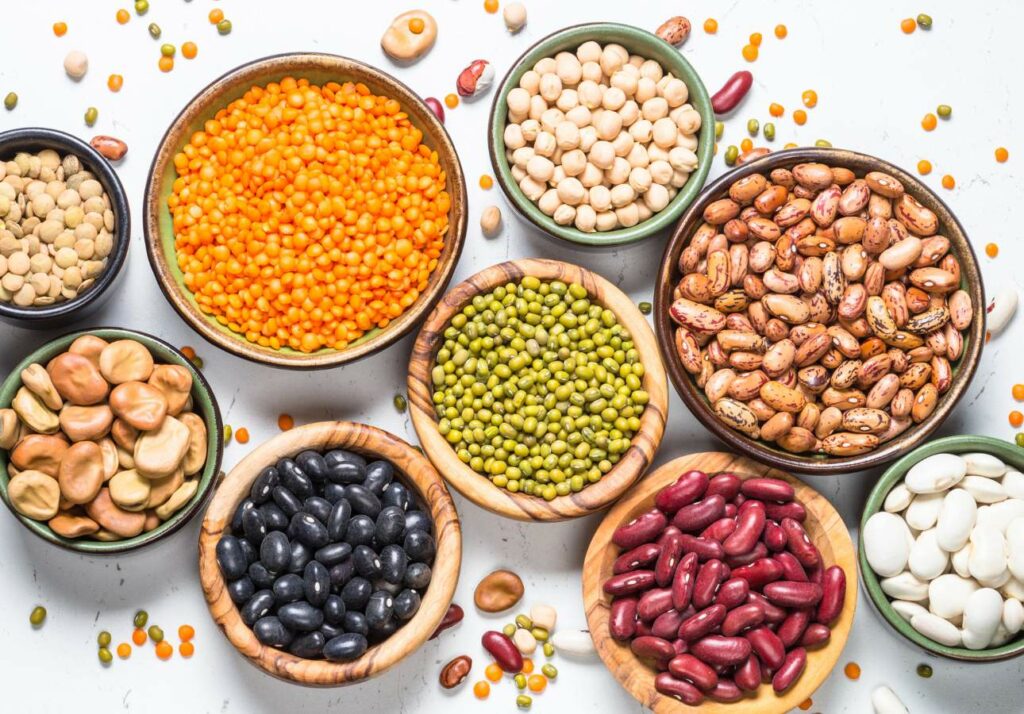
Spoiler: removing lectins from beans is as easy as boiling them. No one eats beans raw, so experiencing any adverse reactions from cooked beans is rare. Still, we need to know why we should avoid lectins in the first place.
Let’s dive into what lectins are, how they can affect our health, and how to remove them from beans and other lectin-containing foods.
Table of Contents (click to view)
What Are Lectins?
If you’ve heard the term “anti-nutrients,” you’ve probably also heard of lectins. The Harvard School of Public Health defines lectins as a type of protein that bind to carbohydrates in the intestinal walls of humans and animals.
In nature, lectins have a very important function: they protect the plant from animals trying to eat it (yep, that includes us!) by disrupting digestive function. Lectins also play a big role in defending plants from insects, bacteria, fungi, and viruses.
These proteins are present in virtually all plant foods, but certain crops have higher amounts, including whole grains and raw legumes. Some common examples of lectin-containing foods are beans, peas, soybeans, peanuts, oats, and wheat.
When Are Lectins Problematic?
Lectins protect plants from things trying to eat them and, unfortunately, that includes humans. When consumed, active lectins can bind to the sugar portions of the intestinal wall. They resist the degradation function of our digestive system and can remain stable in acidic environments.
This specific function is what protects plants from insects, animals, and humans. On the flip side, it’s also what causes adverse effects on human digestion, also known as the plant paradox. According to Harvard, active lectins can lead to digestive issues like:
- Nausea
- Vomiting
- Diarrhea
- Upset stomach
- Bloating and gas
However, the main reason why some types of lectins are considered anti-nutrients is because they can block the absorption of nutrients. According to Harvard, lectins can hinder the absorption of calcium, iron, phosphorus, and zinc. This effect is a particular concern for people with mineral deficiencies.
Luckily, we don’t usually eat lectin-rich foods raw, and as we’ve mentioned before, cooking at high temperatures can easily deactivate lectins. The same goes for sprouting and fermentation. Moreover, lectins are usually found in the outer part of the plant, such as the seed coat or hull, and we typically remove those parts before consumption.
In addition, humans produce an enzyme that naturally breaks down lectins once consumed. However, dietitians from the MD Anderson Cancer Center note that tolerance can vary from person to person. People with gastrointestinal issues like Chron’s, irritable bowel syndrome (IBS), or an autoimmune disease may still react to lectins whether active or inactive, which is where lectin restriction may come in.
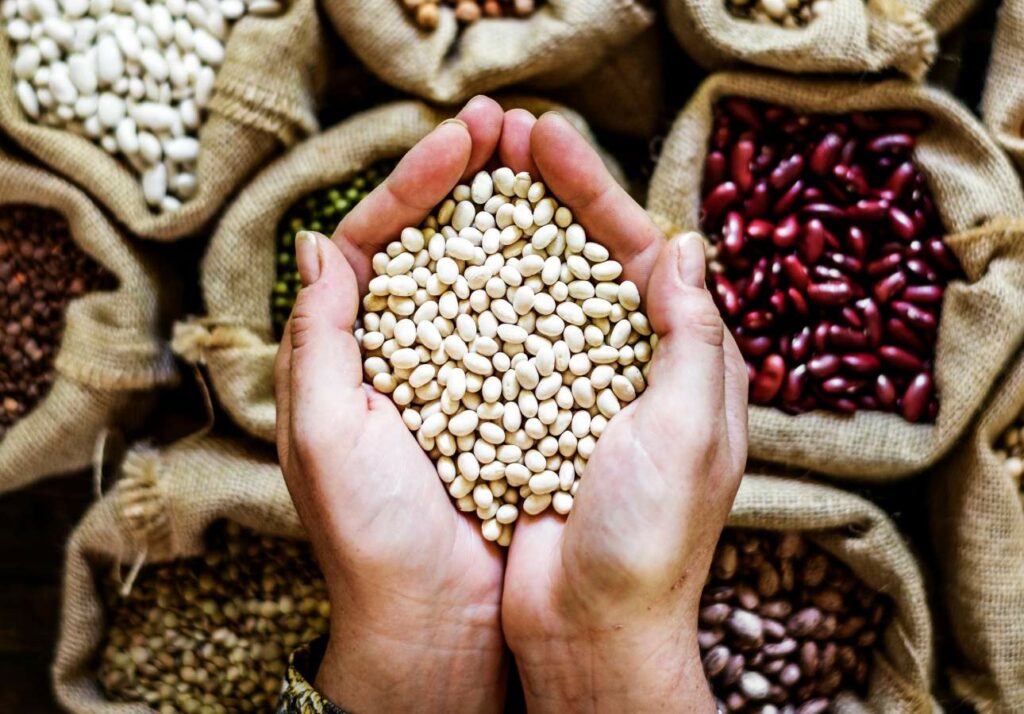
Should You Remove Lectins From Your Diet?
Lectin-containing foods are some of the most valuable crops in the human diet. Plus, you’ll also notice that a lot of these foods are common staples, such as wheat, oats, beans, and lentils. These plants contain a lot of nutrients, such as:
- Carbohydrates
- Protein
- Healthy fats
- Fiber
- B vitamins
- Various minerals
- Antioxidants
Beans, specifically, are an excellent source of macro and micronutrients. A 2021 study on the health benefits of plant-based nutrition cites beans as a rich source of folate, providing around 70% of the recommended dietary allowance for only one cup. Beans also contain high amounts of niacin, which is essential for many metabolic processes, along with various minerals like calcium, magnesium, and copper.
Beans are also a good source of macronutrients, which is why they are a common staple in many cultures. For example, USDA data says that a cup of pinto beans has about 245 calories, 15.4 grams of protein, and 44.8 grams of carbohydrates.
So, your doctor will probably not recommend a lectin-free diet. If you’re constantly experiencing symptoms after eating these foods, they may recommend an elimination diet to identify your triggers.
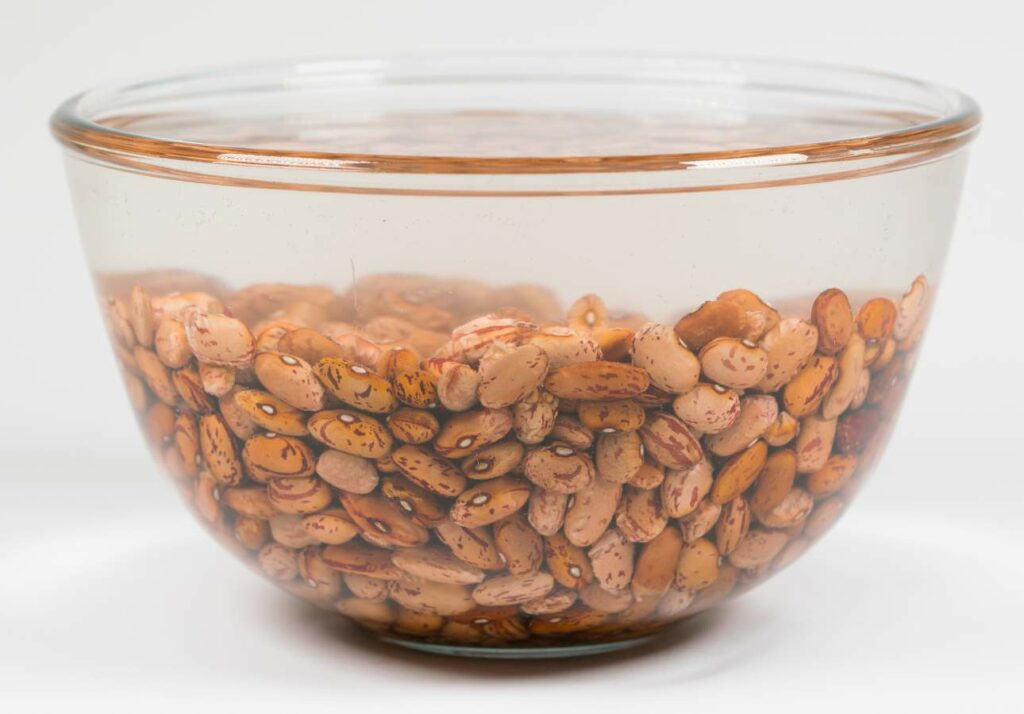
How to Remove Lectins From Beans
We’ve already established that the negative effects of lectin arise when they are in the active state. Fortunately, there are several easy ways to deactivate lectins and make them easier to digest. Here’s the most common procedure for dry, raw beans:
EQUIPMENT:
- Container for soaking
- Large pot
- Colander
- Spoon or fork
INGREDIENTS:
- Beans
- Water
- Herbs, spices, acidic foods (optional)
INSTRUCTIONS:
- Give your beans a good rinse.
- Soak using one of these techniques:
- Hot water: Add 10 cups of water for every 2 cups of beans. Bring the water up to a boil, boil for 2-3 minutes, then turn off the heat. Let the beans soak for up to 4 hours.
- Fast soak: Add 6 cups of water for every 2 cups of beans. Bring to a boil, boil for 2-3 minutes, then let the beans soak for up to 1 hour.
- Overnight soak: Add 10 cups of cold water for every 2 cups of beans. Cover the container and refrigerate overnight.
- Drain the beans and rinse with cold water.
- Place your beans in a large pot and cover them with enough water. Bring to a boil.
- Reduce the heat then let simmer until the beans are tender yet firm. Taste or mash a bean against the pot to test doneness. Cooking time will depend on what type of bean you have. Here’s a guide:
- Black beans: 60 to 90 minutes
- Kidney beans: 90 to 120 minutes
- Navy beans: 90 to 120 minutes
- Pinto beans: 90 to 120 minutes
- Lima beans: 30 to 45 minutes
- Castor beans: 60 to 90 minutes
- Drain your beans immediately using a colander. Watch your fingers!
- Use for other dishes or refrigerate for up to 3 to 4 days. You can also freeze cooked beans for up to 6 months.
Add herbs or spices towards the end of the cooking process to keep the flavor as rich as possible. You can also add acidic foods like lemon juice or vinegar if your recipe calls for it, but make sure to do it after the beans finish cooking. Adding acids prematurely can prevent the beans from becoming soft.
Sprouting
Sprouting is another known method for deactivating lectins, particularly in foods with hard outer shells like beans. This is because most lectins are in the outer covering of the bean, according to the Journal of Plant Physiology.
Sprouting is essentially just adding water to beans and letting them germinate. This process will cause sprouts to emerge from the coat and metabolize the lectins at the same time.
Common beans used for sprouting are mung beans, lentils, alfalfa, chickpeas, and adzuki beans. Raw bean sprouts are generally safe to eat, but the FDA cautions against eating them if you have a compromised immune system. Raw beans may still contain bacteria that cooking usually eliminates.
Fermentation
Fermented beans are very common in Asian cultures. Some of the most popular types of fermented beans include miso and natto from Japan, pickled tofu and soy sauce from China, and tempeh from Indonesia.
The American Society of Microbiology says that fermentation can improve the digestibility of food and remove toxins that hinder absorption, inhibit digestive enzymes, and hinder cellular respiration. Furthermore, fermenting can also increase probiotics in food, which are beneficial bacteria that can help improve gut health. For example, fermented vegetables like kimchi and sauerkraut are known to improve digestion.
You can ferment your own beans at home, but I wouldn’t recommend it if you have no prior experience with at-home food preservation. Fermented foods must stay at the proper temperature and have a pH level of 4.6 or less within the time it’s considered safe to consume. Unsuccessful fermentation may lead to the growth of E.coli, salmonella, and botulism in foods.
I suggest reading up on fermentation and maybe taking a class before trying it out yourself. Here are some fermentation safety tips from Utah State University to help you get started.
Pressure Cooking
Pressure cooking is basically the same as cooking beans on the stovetop, but faster and easier. You might also be able to skip the soaking part. However, pre-soaking can help prevent the beans from bursting.
To try this method, combine a pound of dry beans and 8 to 10 cups of water in your pressure cooker or Instant Pot. Let the beans cook for 15 to 30 minutes, depending on what variety you have.
Release the pressure and check if your beans are cooked with a fork or spoon. Remember to add flavorings and acids only after the beans are cooked.
What About Lentils?
Lentils and beans are both legumes, but they are not exactly the same even though they can look very similar. Nevertheless, removing dietary lectins from beans is pretty much the same process for lentils.
However, lentils cook much faster than beans and do not need pre-soaking. So, follow the instructions above but reduce the cooking time depending on the type of lentil you have.
On another note, some lentils may be easier to digest than beans. Red lentils are my favorite because they don’t cause as much gassiness as other beans or lentils. Plus, they’re an amazing source of fiber, protein, and folate, based on USDA data.
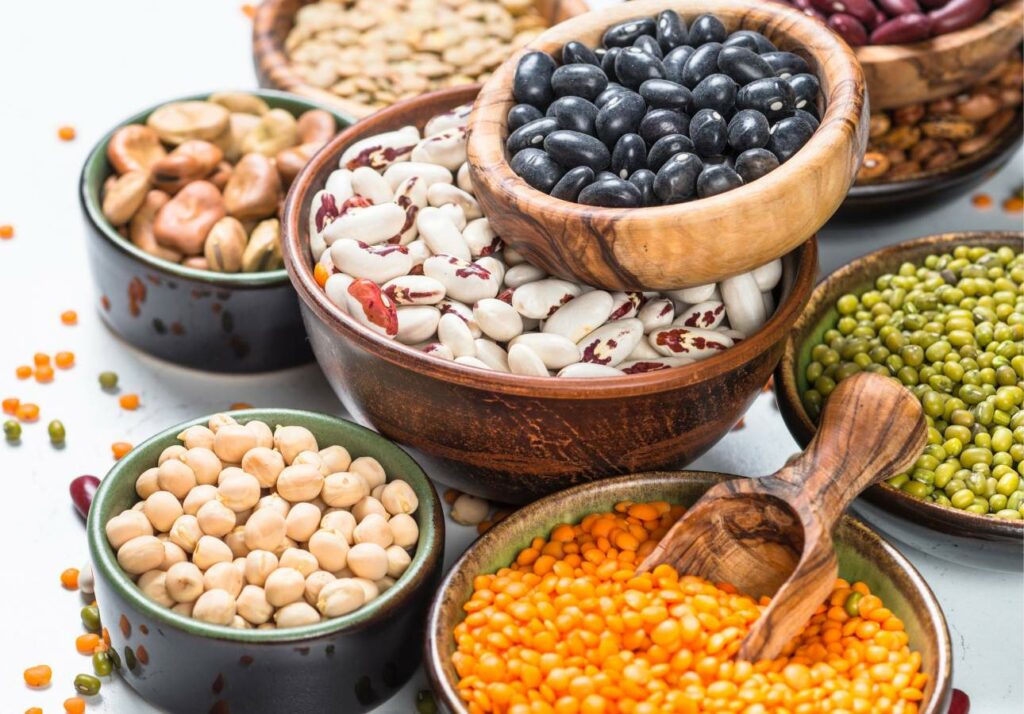
Other Lectin-Containing Foods to Look Out For
Harvard researchers state that while you shouldn’t avoid lectin-containing foods altogether, spacing them out in your meal plan can help avoid negative symptoms. Aside from beans, here are other high-lectin foods to consider:
- Beans
- Bell peppers
- Cashews
- Chickpeas
- Corn
- Cucumbers
- Eggplant
- Green beans
- Green peas
- Irish potatoes
- Lentils
- Melons
- Oats
- Peanuts
- Pumpkin
- Soy
- Squash
- Tomatoes
- Wheat
- Wild rice
- Zucchini
- Nightshade vegetables
Remember that you can inactivate most lectins by soaking, cooking, fermenting, or sprouting them, so don’t be afraid of these nutritious foods. For example, you can easily remove lectin from oats by cooking them normally.
However, cooking might not work for everyone. If you have GI issues or food sensitivities, I highly recommend seeing a doctor to find out how you can manage your symptoms.
Low-Lectin Foods
On the other hand, there are plenty of low-lectin foods to choose from if you’re trying to reduce your lectin intake. There are too many to mention, but here’s a general list to help guide you:
- Leafy greens, e.g., spinach, arugula, kale
- Root vegetables, e.g., sweet potatoes, turnips
- Cruciferous vegetables, e.g., cauliflower, broccoli
- Avocado
- Olives
- Green bananas
- Green mangoes
- Green papayas
- Berries
- Grass-fed meat and poultry
- Pastured eggs
- Dairy
- Coconut milk
- Nut milk
- Chia seeds, hemp seeds
Easy Recipes With Beans
Are you stumped on how to use beans other than serving them as is? Check out these recipes and add in your favorite beans:
- Cheesy Taco Skillet: Enjoy a cheesy, gooey dish packed with all your taco essentials. Mix in your fave beans for that classic taco taste.
- Beef heart tacos: Hearty (literally!), savory, and delicious, these beef tacos are a quick and tasty recipe for those lazy days when you’re too tired to cook but still want something filling. Add your favorite beans for a protein boost.
- Mexican omelette: The perfect breakfast for a low-carb lifestyle; easy, delicious, and flavorful. If you want to make it taste more authentic (and don’t mind the carbs), add some beans, rice, or corn.
- Tostadas with Cheese Shells: Here’s a healthier alternative to traditional tostadas, but they taste just as good! This recipe doesn’t call for beans, but you can add them for a little more protein and flavor.
- Slow cooker crack chicken: Get it on this cheesy goodness with only five simple ingredients; chicken, cheddar cheese, cream cheese, bacon, and ranch. I like to add beans when I need to reach my carb goal, and the flavors blend so well.
Final Thoughts
Lectins can be harmful to the digestive system when eaten in their active state. The good news is that it’s very simple to inactivate most lectins. For beans, the best way to do it is to soak and boil for several hours. It’s the universal way to prepare beans even without lectins in mind, so it won’t be much of a hassle.
As you can see, foods with anti-nutrients are not inherently bad, we just have to find a way to work around the negative effects. If you want to learn more about anti-nutrients, lectins, and other holistic health tips, don’t hesitate to explore more of our blog!
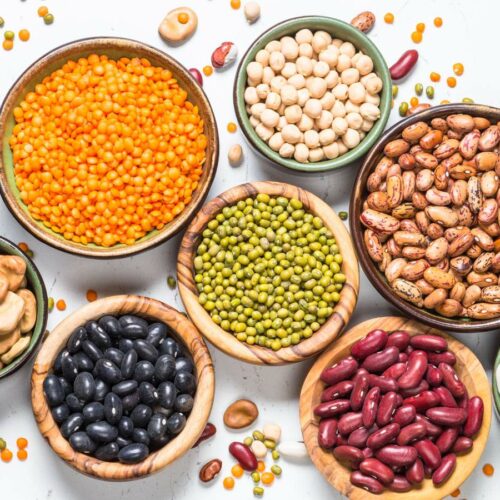
Remove Lectins from Beans with Hot Water
Equipment
- 1 Large pot
- 1 Colander
- 1 Spoon or fork
Ingredients
- 2 cups beans
- 10 cups water
Instructions
- Rinse the beans.
- Bring the water to a boil in a large pot, and maintain that for 2-3 minutes, then turn off the heat. Let the beans soak for up to 4 hours.
- Drain the beans and rinse with cold water.
- Put the beans back in the pot and cover them with water. Bring to a boil.
- Reduce the heat then let simmer until the beans are tender yet firm. Taste or mash a bean against the pot to test doneness.
- Drain the beans immediately using a colander over the sink before serrving or storing in the refrigerator for up to 3 to 4 days. You can also freeze cooked beans for up to 6 months.
Notes
- Black beans: 60 to 90 minutes
- Kidney beans: 90 to 120 minutes
- Navy beans: 90 to 120 minutes
- Pinto beans: 90 to 120 minutes
- Lima beans: 30 to 45 minutes
- Castor beans: 60 to 90 minutes
Nutrition & Macros
To obtain the most accurate representation of the nutritional information in a given recipe, please calculate the nutritional information with the actual ingredients and amounts used, using your preferred nutrition calculator. Under no circumstances shall the this website and the author be responsible for any loss or damage resulting for your reliance on the given nutritional information.

